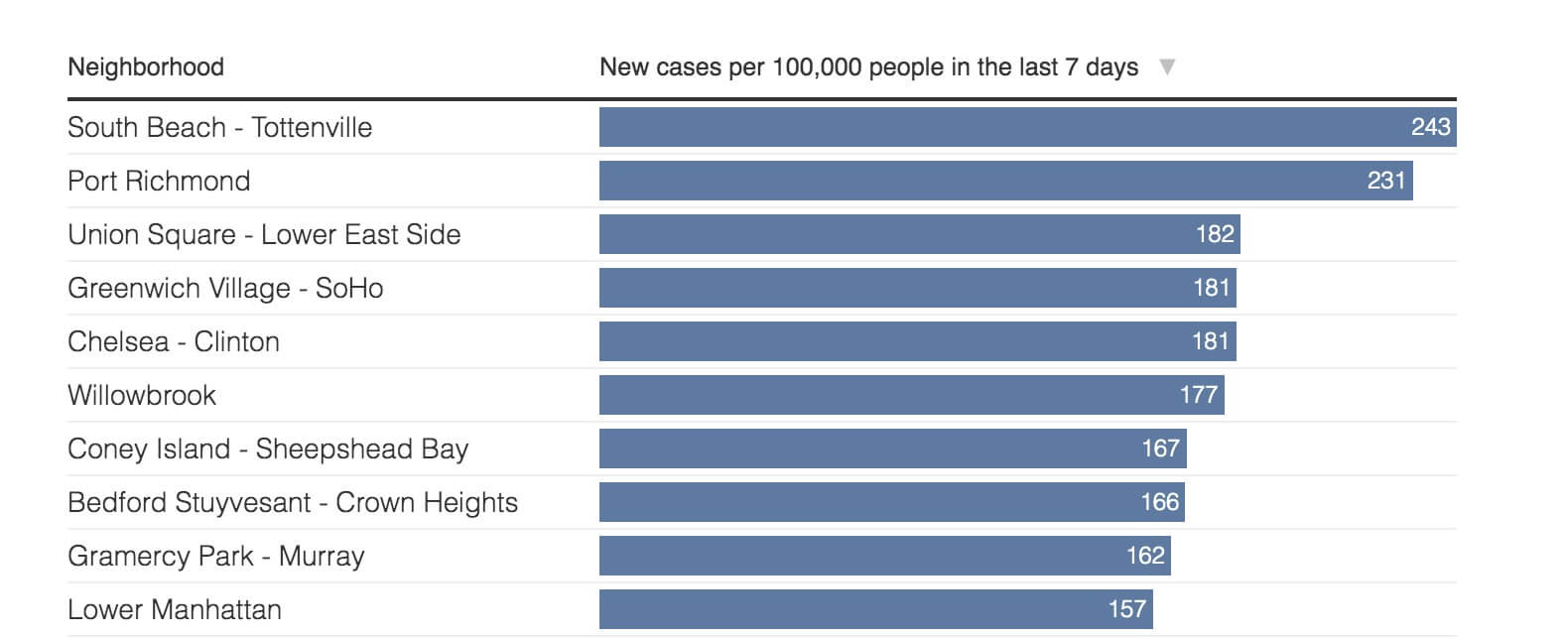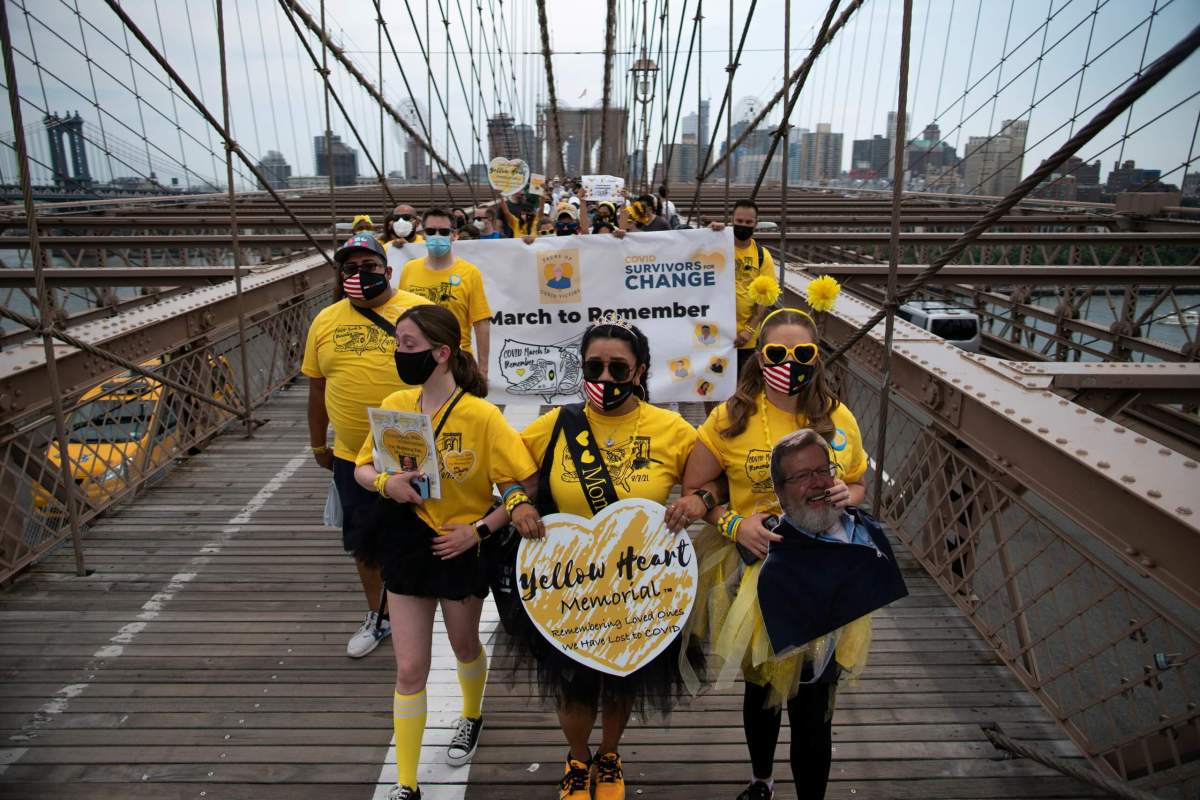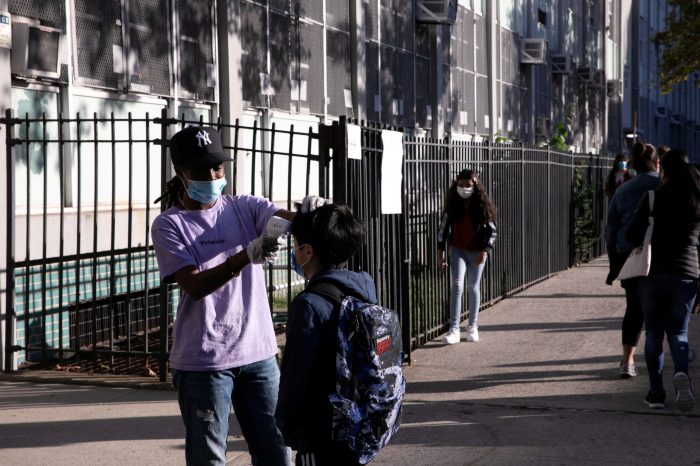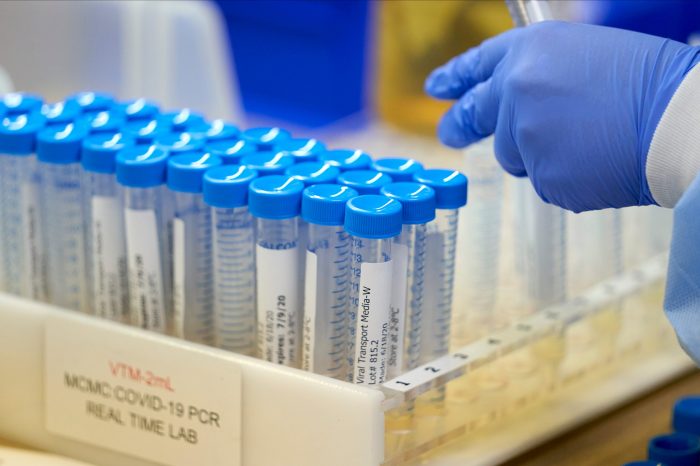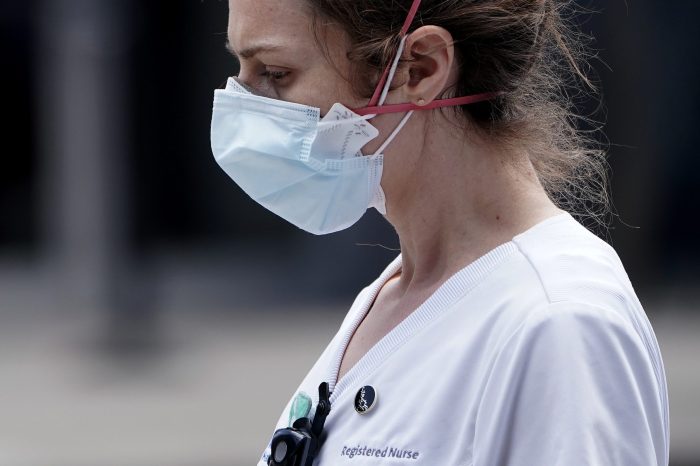Close to a quarter of New York City’s 177 ZIP codes have 70% or more of its residents fully vaccinated against COVID-19, according to the latest New York City Health Department data.
Approximately 56% (4,634,133) of the city’s population (8,336,817) is fully vaccinated from the potentially deadly virus, and that’s playing a significant role in keeping COVID-19 hospitalizations low as the highly-contagious Delta variant continues to spread like wildfire across the Five Boroughs.
The city’s Health Department found that 83% of all tested COVID-19 cases over the past four weeks have come back as positive with the Delta variant, making it far and away the dominant strain of the illness. The 7-day positivity rate, on Aug. 4, was 3.28%, which would have been particularly dangerous during the time before the COVID-19 vaccine was made widely available.
However, the current hospitalization rate is strikingly low. As of Aug. 8, the city’s seeing a daily average of 48 patients with COVID-19 over the past week, up just five from 43 reported on Aug. 1.
Manhattan continues to have the only four ZIP codes with 100% of its residents fully vaccinated: areas of the Financial District (10004 and 1006) and Hell’s Kitchen (10018 and 10036). A third section of Hell’s Kitchen (10019/10020) has a fully vaccinated rate of 92%.
Areas of Chelsea in Manhattan (10001/10118) and Flushing/Murray Hill/Queensboro Hill in Queens (11355) have fully vaccinated rates of 94% and 90%, respectively, according to the city’s Health Department.
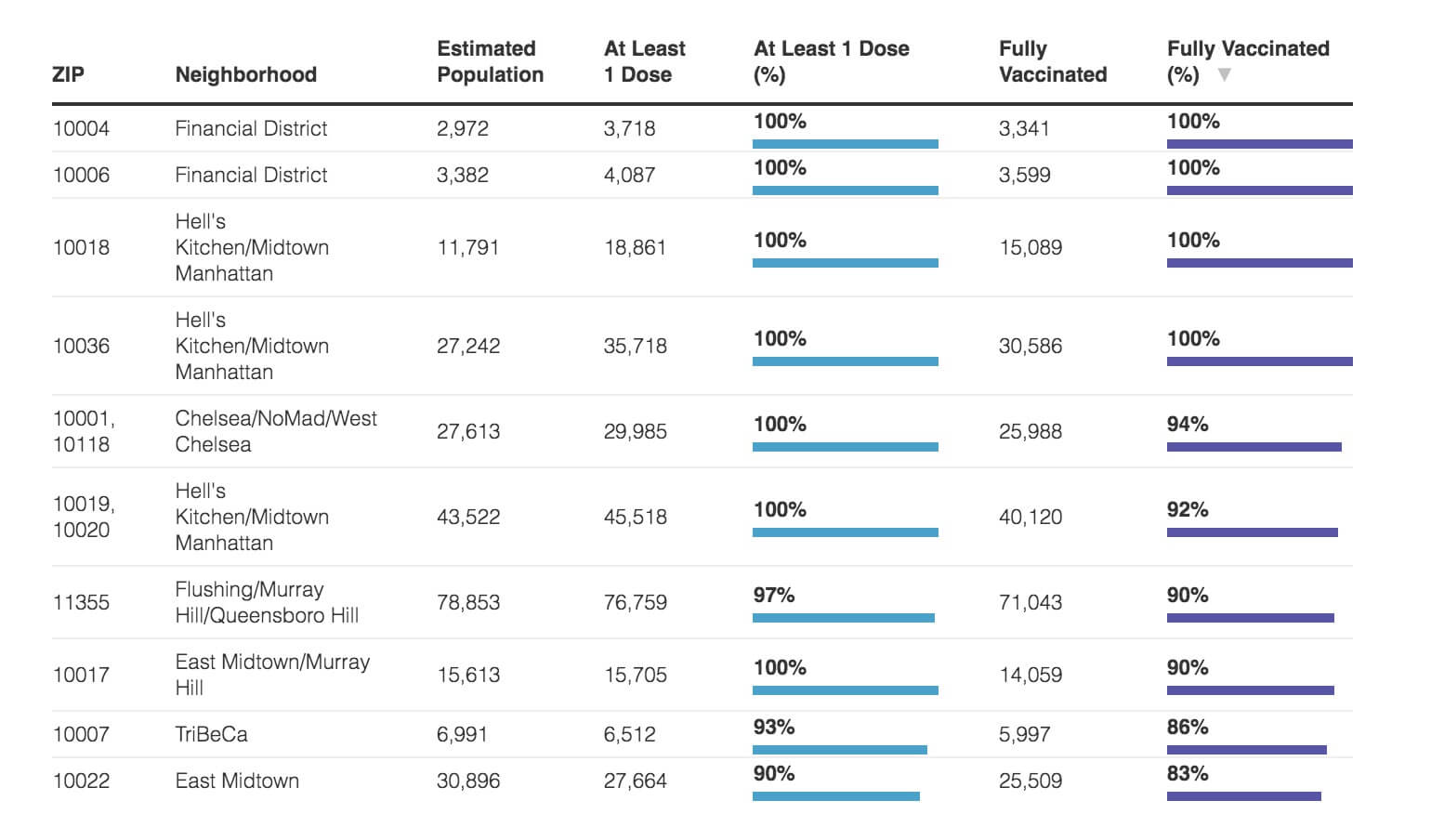
Meanwhile, 60 ZIP codes across the city have fully vaccinated rates of under 50% — accounting for a third of all ZIP code areas of the Five Boroughs. Twelve of these communities have fully vaccinated rates below 40%.
The Edgemere/Far Rockaway area of Queens (11691), which has been at the bottom of the fully vaccinated barrel for weeks now, continues to run dead last in the city — with just 34% of its 66,856 residents fully vaccinated, and 40% of residents with at least one dose. Elected officials have made appeals in recent weeks to get more shots in arms there.
Neighboring Arverne, Queens (11692) ranks seventh on the list of New York City areas with the lowest fully vaccinated rates (38%). Seven Brooklyn communities and one area of the Bronx are also among the 10 lowest vaccinated areas of New York City.
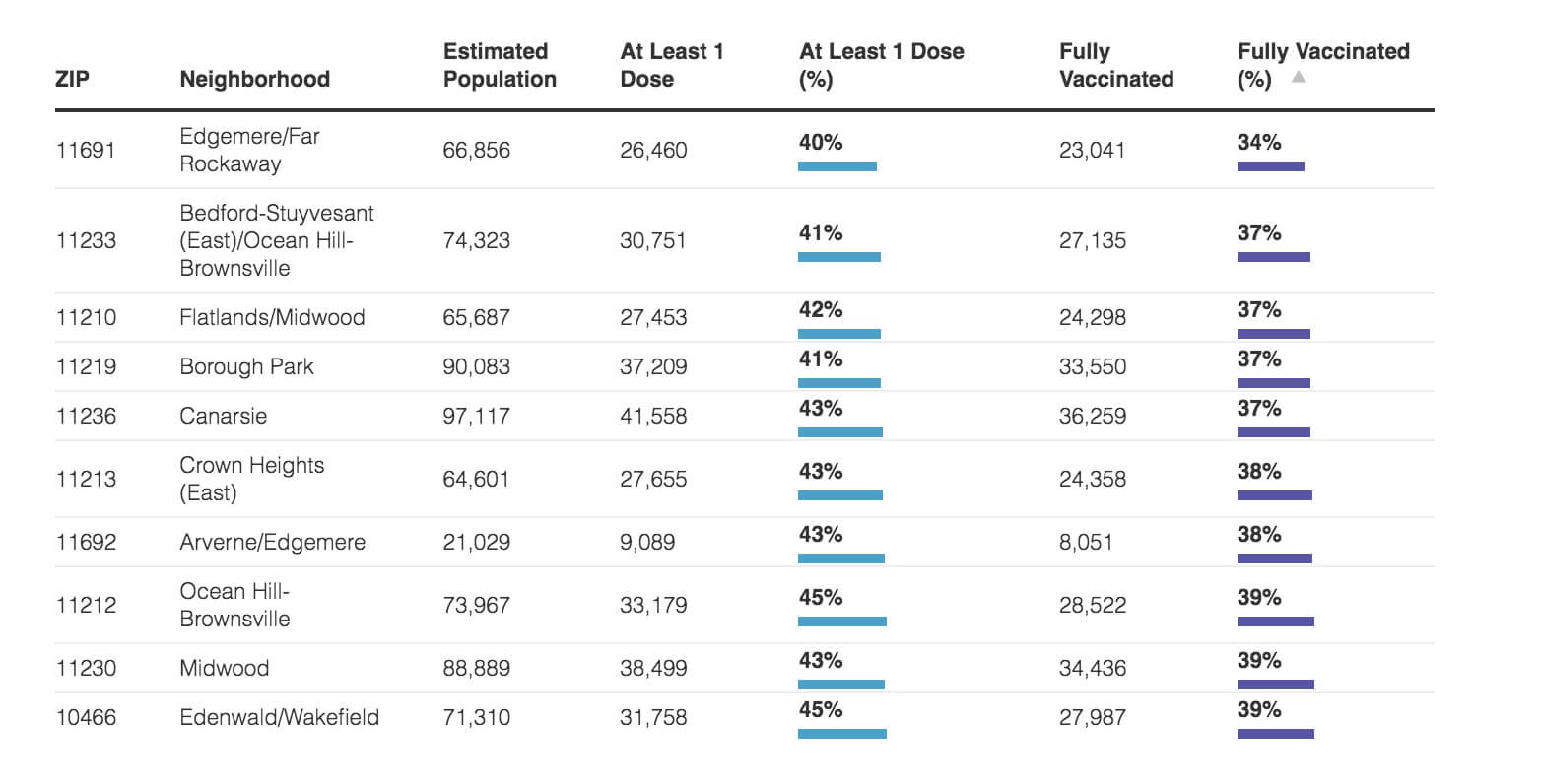
Tracking the spread
Last week, Mayor Bill de Blasio announced a shift in methodology when it comes to tracking the spread of COVID-19. During an Aug. 4 briefing, he said the Health Department would be moving away from tracking 7-day positivity rates because of a lack of accurate data.
“[T]he positivity level is something we’re going to be paying less and less attention to because it is not showing us accurate enough information where you see a lot of changes in the way testing is happening in terms of the number of people, and who’s going to get tested,” he told reporters. “What we’re focused on is the case numbers, which are way too high, the hospitalization rate, which is actually still pretty good, and the vaccination numbers, which are strong, and we intend to make a lot stronger.”
Rather than post the 7-day positivity rate by neighborhood on its site, the city’s Health Department listed case averages for general areas per 100,000 residents. At the top of the list is South Beach-Tottenville on Staten Island, which over the last seven days has seen 243 new cases per 100,000 people.
Tottenville ranks among the lowest vaccinated areas in the Five Boroughs, with about 43% of its residents fully vaccinated against COVID-19.
Several highly-vaccinated areas of Manhattan are also on the list, including the Lower East Side (182 per 100,000 people), Greenwich Village-SoHo (181 per 100,000) and Chelsea-Clinton (181 per 100,000). Getting the vaccine doesn’t guarantee that someone won’t get the virus, but it will ensure that if someone becomes infected, they will either be asymptomatic or experience mild symptoms.
